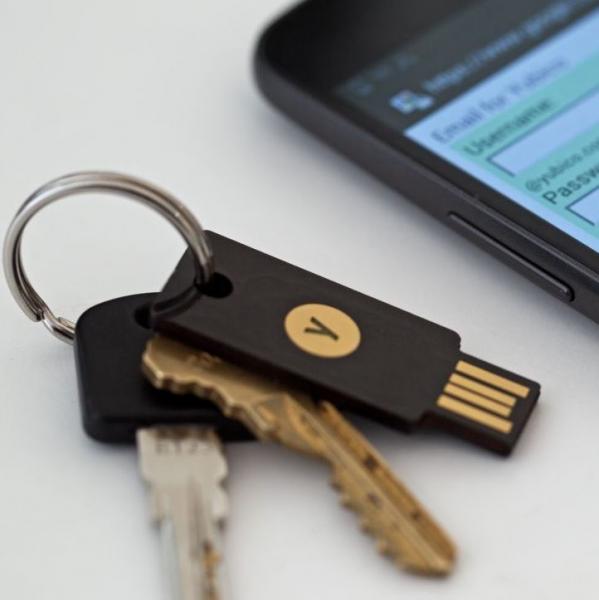If you are like me, you have valuable data assets stored in electronic devices such as computers, smartphones, and tablets. As more and more of our transactions have become electronic our heirs may face enormous challenges recovering that information after we die or become incapacitated. The challenges are increasing with two-factor authentication (2FA) processes guarding our devices and accounts.
Blog
Accessible transportation is essential for successful aging, because quality of life cannot be sustained unless older adults have reliable and affordable access to social, medical, and other essential services. This is why Dial-A-Ride is vital to many older adults and why my research team created a prototype mobile app for Dial-A-Ride users.
There is another serious epidemic silently spreading in America: senior invisibility. Nearly everyone except for essential workers experienced “early retirement” from everyday activities, at least for a while, when stay-at-home orders went into effect across the country.
Since the beg
Driving a car means maintaining independence for many older adults — driving allows you to shop, see friends and family, keep up with medical appointments, and avoid social isolation. But sometimes staying safe behind the wheel as you age can be a challenge.
The presidential contest is fully underway, and many of the candidates fit the definition of “older adults,” those age 65+ years. In the past I’ve been queried about candidates for high office (such as former Canadian Prime Minister Jean Chretien) who are of pensionable age. Usually the concerns of the journalist are not that the candidate might die in office, but rather that they may become demented and whether we should have either an age limit on candidates or some form of fitness testing.
Advanced driver assistance systems (ADAS) are included in many new vehicles. They feature such functions as blind-spot detection (sadly, usually only available with a high-end package), forward-collision warning and braking, lane-keeping warning and steering guidance, adaptive cruise control and the now required (in all new 2018 vehicles) backup camera.
We have so many ways to communicate with each other today that didn’t exist 50 years ago, such as through the Internet and with mobile phones, yet we report greater social isolation and loneliness than ever before. Research studies suggest that about a quarter of the U.S.
Even though the United States spends more on health care per capita than most other countries, life expectancy is lower than in many other developed countries and varies geographically. There is a huge need to improve healthcare delivery and outcomes, while reducing healthcare costs. Health information technology is the key to make this happen.
The term “Wicked Problems” arose in the 1970s to distinguish major challenges of public policy from those of the hard sciences. Most famously articulated in a 1973 paper by Rittel and Webber in Policy Sciences, Wicked Problems are issues that are very difficult, if not impossible, to solve because they are 1) highly complex, with no readily apparent solution, 2) intricately interconnected with other problems, 3) entrenched in the landscape and/or the political arena, and 4) volatile, presenting constantly moving targets to policy makers. These problems defy conventional solutions because the typical set of policy responses are insufficient to address these problems in any meaningful way.
Take steps to ensure your heirs have access to your digital assets
If you are like me, you have valuable data assets stored in electronic devices such as computers, smartphones, and tablets. As more and more of our transactions have become electronic our heirs may face enormous challenges recovering that information after we die or become incapacitated. The challenges are increasing with two-factor authentication (2FA) processes guarding our devices and accounts.
Yanshuo Sun leads team developing mobile app that opens way for easy use of Dial-A-Ride by older adults
Accessible transportation is essential for successful aging, because quality of life cannot be sustained unless older adults have reliable and affordable access to social, medical, and other essential services. This is why Dial-A-Ride is vital to many older adults and why my research team created a prototype mobile app for Dial-A-Ride users.
The Vanishing Senior: A silent epidemic
There is another serious epidemic silently spreading in America: senior invisibility. Nearly everyone except for essential workers experienced “early retirement” from everyday activities, at least for a while, when stay-at-home orders went into effect across the country.
Study finds older Americans did not feel lonelier, despite social distancing recommendations and stay-at-home orders
Since the beg
Driving safety for older adults: Watch for changes, make adjustments
Driving a car means maintaining independence for many older adults — driving allows you to shop, see friends and family, keep up with medical appointments, and avoid social isolation. But sometimes staying safe behind the wheel as you age can be a challenge.
Running for president — is age an issue?
The presidential contest is fully underway, and many of the candidates fit the definition of “older adults,” those age 65+ years. In the past I’ve been queried about candidates for high office (such as former Canadian Prime Minister Jean Chretien) who are of pensionable age. Usually the concerns of the journalist are not that the candidate might die in office, but rather that they may become demented and whether we should have either an age limit on candidates or some form of fitness testing.
Will driver-assistance technology help prevent accidents?
Advanced driver assistance systems (ADAS) are included in many new vehicles. They feature such functions as blind-spot detection (sadly, usually only available with a high-end package), forward-collision warning and braking, lane-keeping warning and steering guidance, adaptive cruise control and the now required (in all new 2018 vehicles) backup camera.
The scourge of loneliness and social isolation
We have so many ways to communicate with each other today that didn’t exist 50 years ago, such as through the Internet and with mobile phones, yet we report greater social isolation and loneliness than ever before. Research studies suggest that about a quarter of the U.S.
Too Much Medical Jargon? Assessing and Bridging the Terminology Gap between Health Consumers and Medical Professionals
Even though the United States spends more on health care per capita than most other countries, life expectancy is lower than in many other developed countries and varies geographically. There is a huge need to improve healthcare delivery and outcomes, while reducing healthcare costs. Health information technology is the key to make this happen.
Are your grandparents getting tipsy at the holiday party?
“As baby boomers have begun trickling into later life, the stereotype of Grandma sipping hot cocoa by the fire has slowly been replaced with Grandma sipping a glass of wine with her friends and family,” write ISL Faculty Affiliate Dawn Carr and Amy Burdette, both of FSU’s Department of Sociology.






















